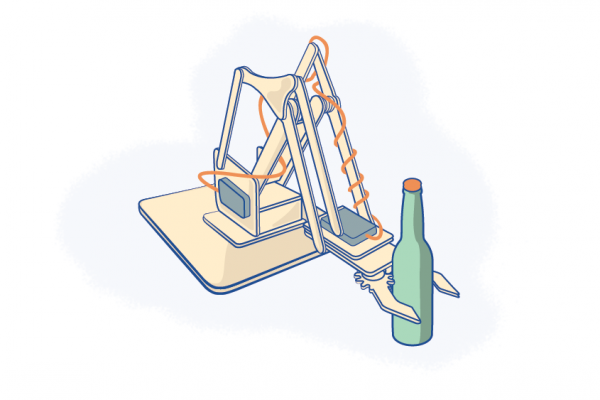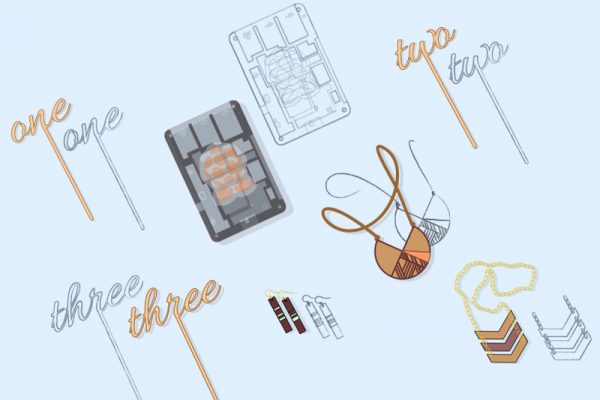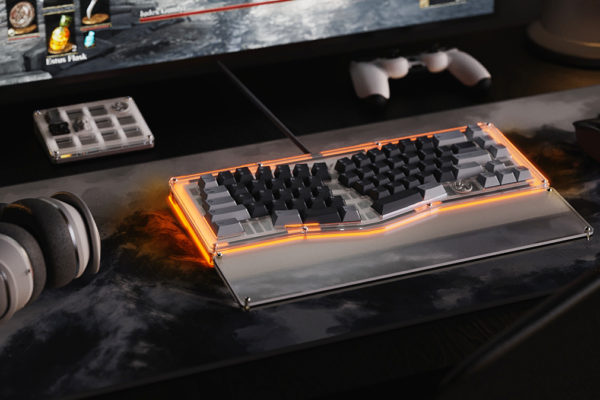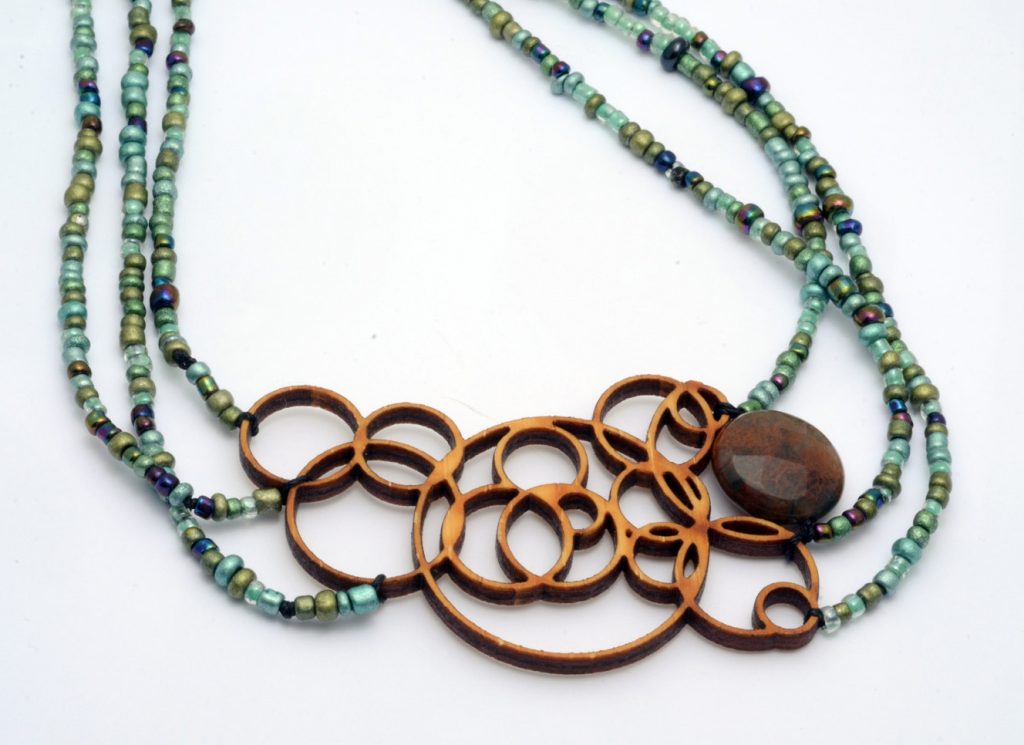
Insights From A Decade-Long Ponoko Maker And Etsy Seller Melanie Lynn
Melanie Lynn Penn, jewelry designer and owner of Etsy shop Melanie Lynn Design, has been making jewelry as long as she can remember, getting started at her father’s work bench in the family garage. “He had an old paint can filled with random old metal odds and ends,” she says. “I started playing around with the pieces I found, hammering them into shapes and bending them with pliers. I was in heaven and instantly hooked.”
After exploring metalsmithing in high school, she applied to SUNY New Paltz’s metals program where she planned to study traditional metalsmithing techniques. After the first two years, she found herself feeling lost and looking for new techniques and materials to inspire her work. That’s when Arthur Hash joined the faculty and introduced her to tools such as CAD, Rhino and 3D printing.
“His 3D design class was the first of its kind ever offered at the school and it changed my life,” she says. “It set me on the path I am on right now with both my personal collection and my full time job as a CAD modeler/technical designer. He completely changed my views on making and what contemporary jewelry was and could be.”
Today, Melanie is constantly seeking out new and unexpected techniques and materials for her laser cut wooden and acrylic jewelry. She creates stunning and intricate one-of-a-kind statement pieces–all without the high price tag. Her secret? Laser cutting designs out of relatively inexpensive materials such as wood and acrylic to incorporate into her innovative designs.
She blends traditional jewelry making techniques (such as wire wrapping and beading) and classic materials (such as stone and leather) with her laser cut wooden and acrylic jewelry designs to make unique and whimsical pieces, all at an incredible accessible price point.
Finding Her Creative Outlet
By day, Melanie is a technical designer for a high-end jewelry designer where her work centers around expensive and often inaccessible materials such as precious stones and luxury metals. Because she spends much of her time modeling in CAD, there is little opportunity to think creatively.
In her own time however, she prefers to step away from the high-end world and explore her own creativity with laser cut wooden and acrylic jewelry. “I like to get away with my whimsical thoughts whenever I can in my own work,” she says, “I really want to make jewelry I enjoy wearing.”
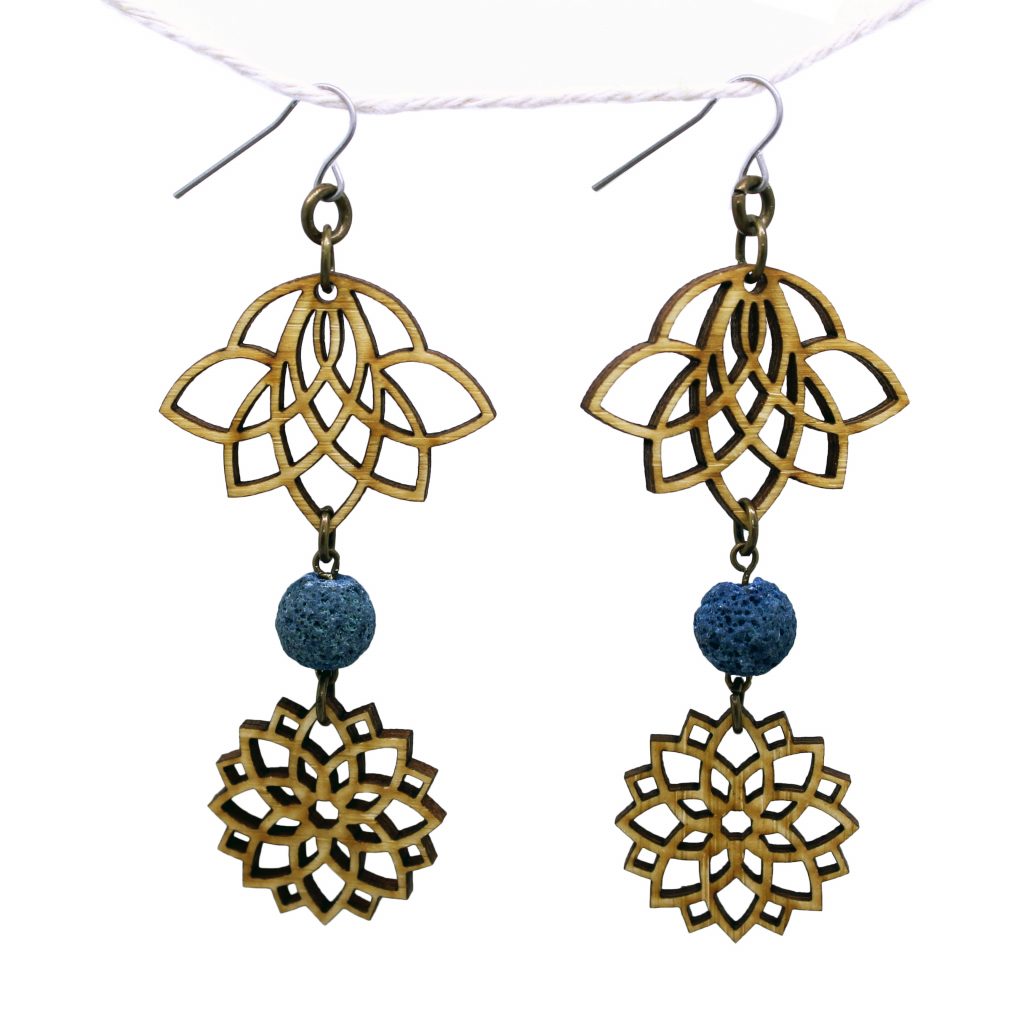
Melanie creates delightfully beautiful statement jewelry and much of her work features a repeating circle pattern that has been part of her classic, signature style for years. “These designs are very geometric and a bit hypnotic in that the lines never seem to end,” she says.
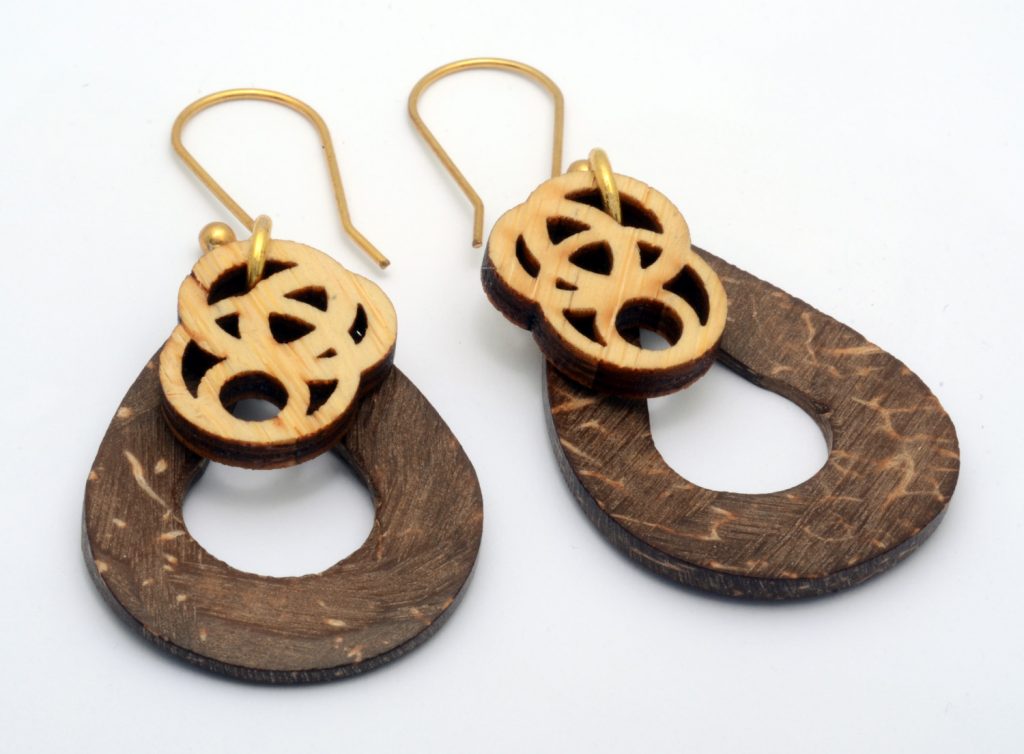
Inspired by the world she observes around her, Melanie says she keeps a ton of notebooks around that she jot ideas in and cuts things out that inspire her such as fractals and nature photos with patterns in them. Then when it’s time to focus on creating unique wooden jewelry and innovative acrylic designs, she returns to these ideas for inspiration.
“I love just creating a few lines or curves that I think are beautiful then playing with copying them, rotating them around until I’m really happy with what I’ve created,” she says. “I have a tendency to create a bunch of shapes all at once, laser cut a full sheet of the same item maybe in various sizes and then experiment with using them in different applications. I keep a box of all the random pieces I have designed and cut and when I’m looking for inspiration I pull it out and begin to play. It’s like my living sketchbook.”
While Melanie says she knows exactly what the endgame will be for some of the laser cut wooden and acrylic jewelry designs as soon as she creates them (such as a piece that will be hand-painted, for example), others aren’t always as clear.
“For other items, I’ll spend a weekend morning (I’m an early riser, 7am is my favorite working time) with all my beads, gemstones, color swatches and other supplies spread out on my kitchen table or living room floor,” she explains. “From here, I play mix and match, putting things together and taking them apart until something speaks to me. This is usually also when my box of past cuttings makes an appearance. I love rediscovering places my mind went in previous moments of creativity.”
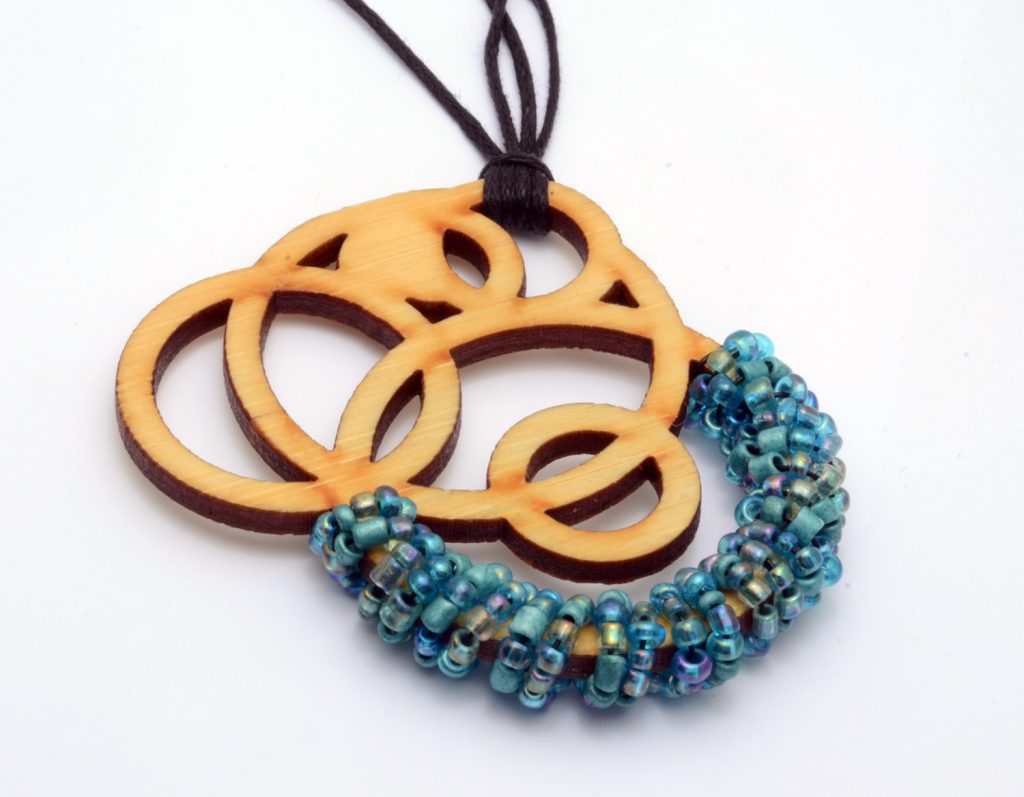
Choosing Materials For Quality And Cost
While Melanie works with a variety of materials offered by Ponoko, some designs clearly work better with certain materials. “Sometimes the piece I’m designing fits perfectly with a specific color or material,” she says, such as these white acrylic earrings–the very first piece of laser cut acrylic jewelry she made with Ponoko in 2008 that still remains one of her top-sellers today.
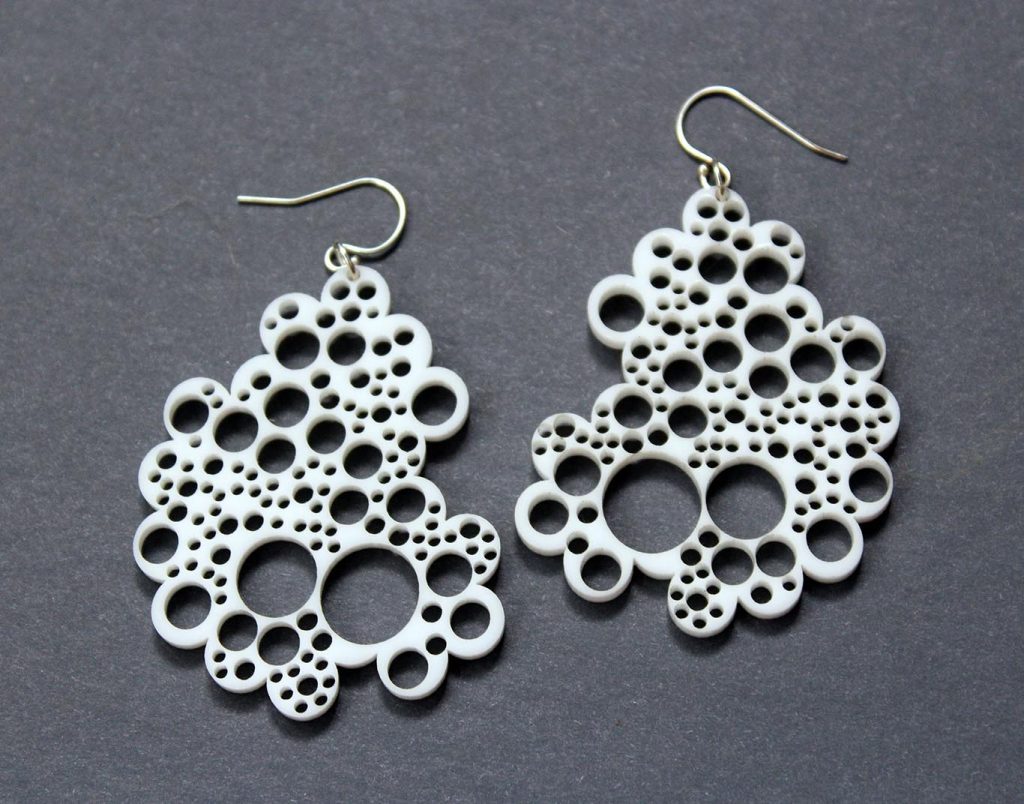
But as Melanie has grown as a designer, her use of materials has also evolved over time. While she started off with the white acrylic seen above, she has found the opaque clear and transparent blue tones to also be an excellent fit for the bubble pattern. “The blue literally looks like water bubbles,”she says.
While Melanie loves how lightweight and shiny acrylic is, she has begun to laser cut wooden jewelry as well. “I love working with laser cut bamboo because it gives me such a great blank canvas to work off of,” she says. “The wood takes paint and other surface treatments beautifully, and I love the way each piece has a different burn pattern.”
The marriage of the precise digitally fabricated element and the handmade paint application is quite striking, as can be seen in these earrings.
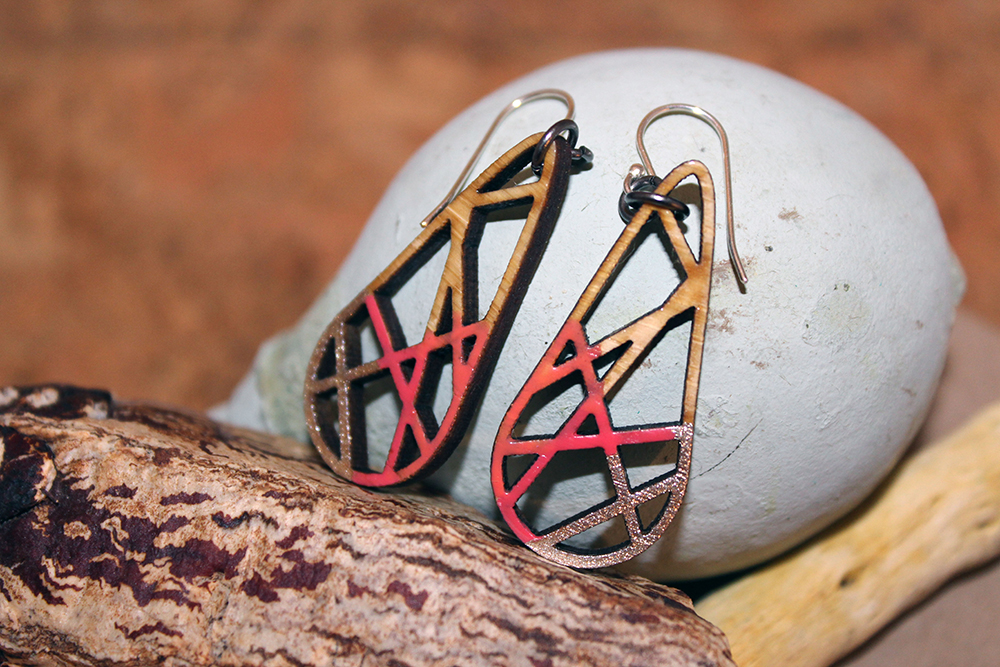
Another important consideration for Melanie is the lightweight nature of the materials she chooses. “I have always loved huge earrings but was horrified by what they tend to do to people’s earlobes,” she says. “With laser cut bamboo and acrylic, I feel that I can go as big as I want without every weighing down the wearer.”
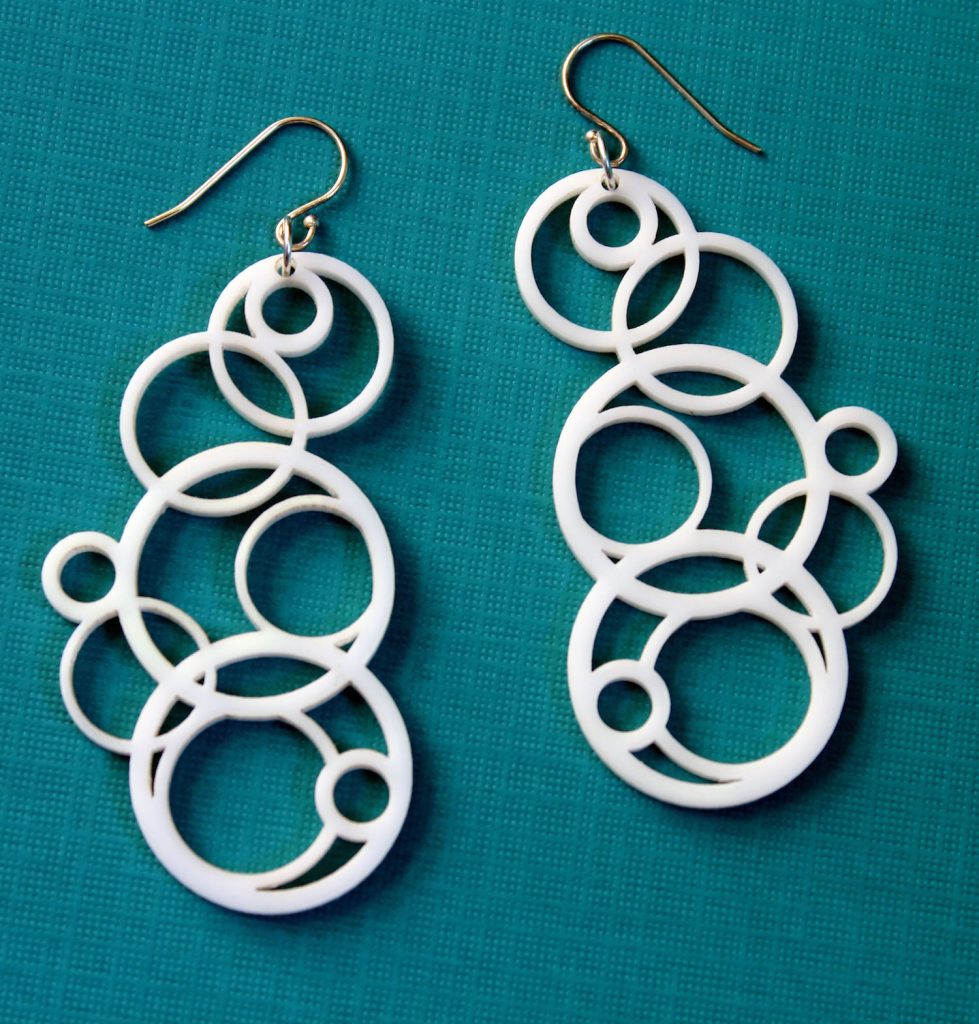
Melanie has even found a way to combine her love of wood and acrylic. “I have done a lot of pieces that blended bamboo and the mirrored acrylics, which I think compliment one another beautifully,” she says.
Currently, she is working with an awesome assortment of door-knocker-shaped and other carved genuine stones, malachites and jade. “I’m incorporating my laser cut pieces with these semi precious stones, playing with textures and patterns,” she says. “One of the pieces uses laser cut work I did five years ago that I had kept hiding in my inspiration box for when the moment would later strike me.”
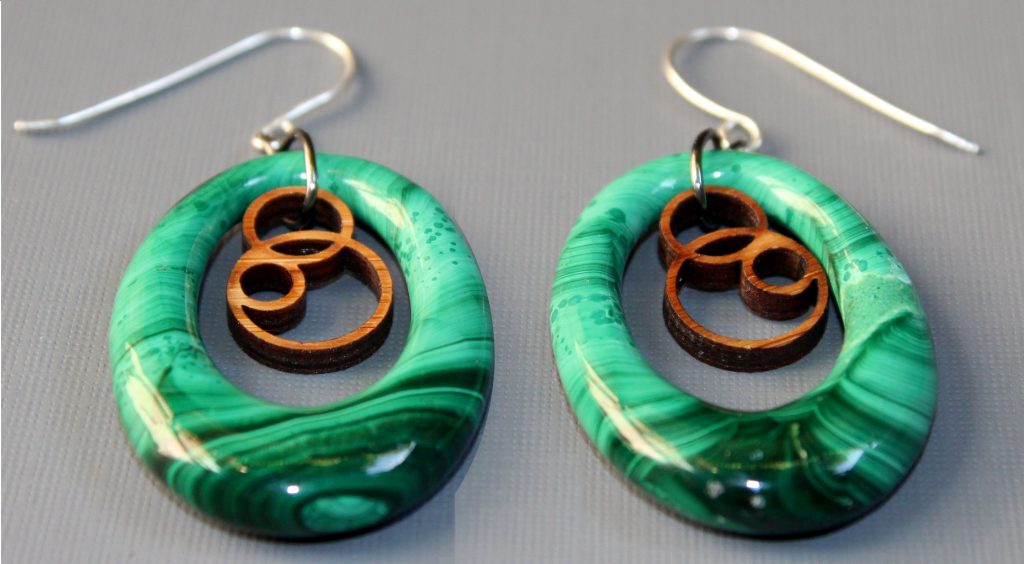
Designing Laser Cut Wooden And Acrylic Jewelry
Throughout the years, Melanie has gained some true insights in building successful designs for laser cut wooden and acrylic jewelry. “It took me a project or two to realize that things I could laser cut facing all one direction in acrylic really needed to be mirrored over to have a left and right side for earrings when cutting in bamboo,” she explains. “This way the beautiful burned pattern is on the same directional side of both earrings.”
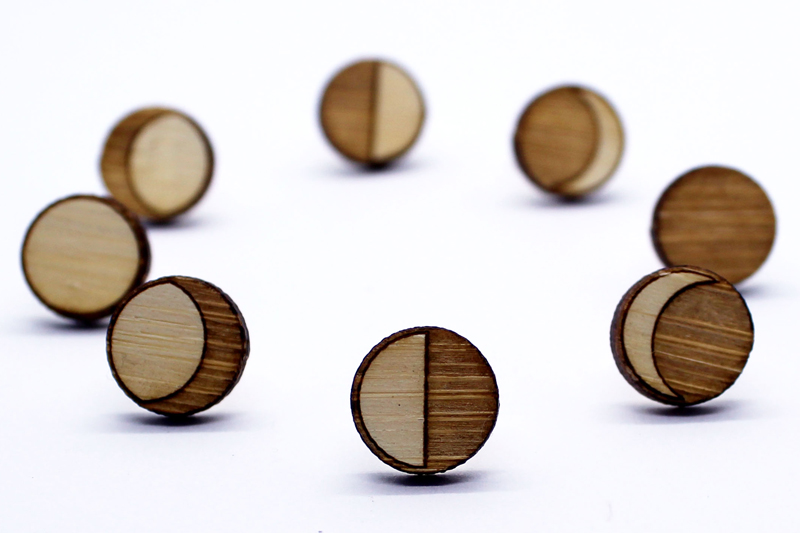
To reduce laser cutting costs, Melanie says it’s best to cut your design out of an inexpensive material and prototype before going forward. “Get all your kinks out before moving into something more pricey,” she recommends.
Another tip: “Nest your items! The closer in you get those designs the more cost effective your cutting will be,” she says. “The first time laser cutting I didn’t really think about it, but the next time around cutting of the same items was much cheaper.”
And for other jewelry designers, Melanie says to keep an eye on the kerf around crucial parts of your design to produce a durable product that is still light and airy in design. “I wasn’t really thinking about strength in wall and sometimes ended up with pieces a little too thin in important places, such as where I wanted to put an earring wire.”
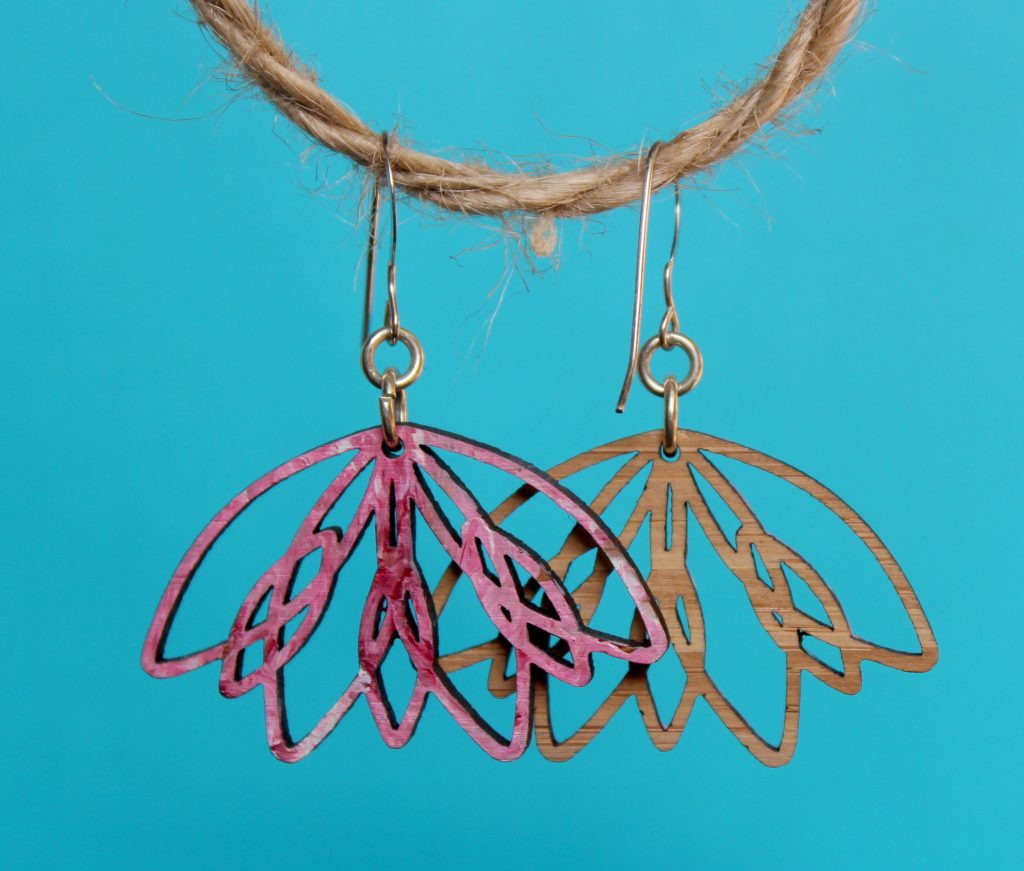
With prototyping, it only took a few trial and error cuts for Melanie to nail down the necessary kerf for her laser cut wooden and acrylic jewelry designs. If this is a consideration for your products, prototype first and then tweak your design from there.
Working With Ponoko
Melanie and Ponoko go way back. All the way back to 2008 when she was still in school and was introduced to Ponoko through Professor Hash. Ten years later and Melanie is still a loyal maker.
“I loved the customer service I encountered with Ponoko from the very first time I worked with them,” she says. “I loved how quickly I was able to get all my questions answered and how personal the service felt. With other services I looked into, I felt like since I was ordering 10 and not 10,000 my work didn’t really matter to the company. So for the limited runs that I do, Ponoko was and still is the best fit for me.”
Material selection for her laser cut wooden and acrylic jewelry has also been a priority. “Being able to have the materials and the cutting provided by the same company is also really great,” Melanie says. “I don’t have to spend time sourcing out small quantities of specialty materials, nor do I end up getting stuck with tons of excess.”
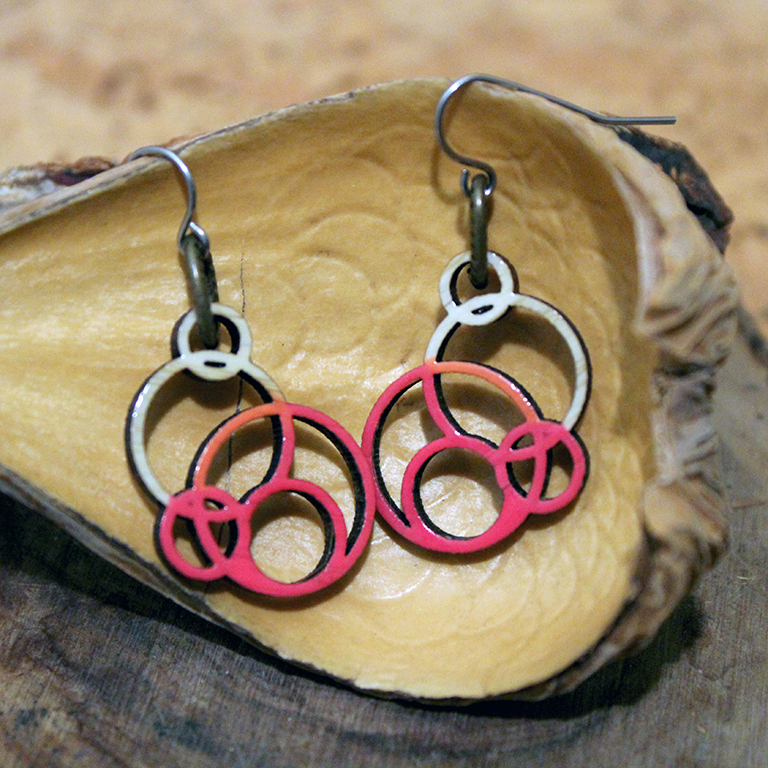
But most importantly, for Melanie and makers like her who are selling their products for a profit, is the pricing. “I can be sitting around designing at any hour, upload and immediately know what it’s going to cost me to have it,” she says. “Likewise, if I’m working with clients, I can know way ahead of time what budget we are looking at to make their dream products. The reasonable pricing Ponoko offers allows me to make a profit while keeping things affordable so as many people as possible can have access to what I create.”
Melanie says, “I love being along for the ride as Ponoko and I have grown into ourselves.” (We love it, too, Melanie!) “I have felt like a valued member of the community ever since my first order. I’m a super loyal person, and after so many years of successful cutting I can’t imagine looking elsewhere.”
To learn more about Melanie and keep up with what she is making, check out the Melanie Lynn Design website, Instagram and Etsy shop.
And if you want more custom laser cut jewelry making tips and inspiration, check out how Cottage On The Cliff and Gio Gio Designs go to market.
Additional thanks to Lisa Horn for supplementary writing and content editing.
